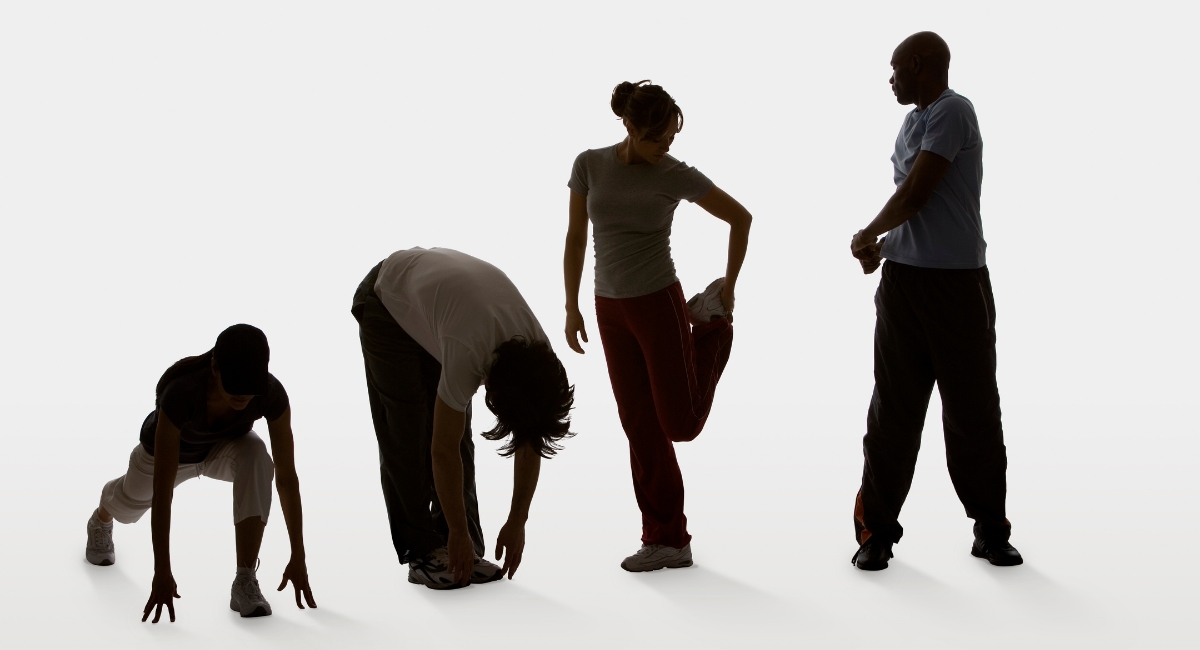
Unveiling the Mechanics: The Body’s Adaptation to Progressive Stretching
Stretching is a fundamental practice that contributes to improved flexibility, reduced risk of injury, and enhanced overall well-being. Progressive stretching, a method that gradually increases the range of motion over time, has gained attention for its effectiveness in promoting safe and sustainable improvements in flexibility.
Let’s take a look at the mechanics of how the body adapts to progressive stretching, exploring the physiological processes, benefits, and considerations for a successful stretching regimen.
Understanding Progressive Stretching
Progressive stretching involves a gradual and controlled approach to increase flexibility by incrementally pushing the body’s limits. Unlike static stretching, which holds a stretch for a fixed duration, progressive stretching involves applying gentle tension over time, allowing the muscles, tendons, and connective tissues to adapt and lengthen gradually.
The Mechanism of Adaptation
- Muscle Fiber Stretching: While stretching, muscle fibers are elongated through micro-tears and the stimulation of muscle spindles. Over time, these micro-tears heal and adapt, leading to increased muscle length.
- Tendon and Ligament Adaptation: Progressive stretching promotes increased elasticity and strength in tendons and ligaments. The controlled stress applied during stretching encourages these connective tissues to become more pliable and resilient.
- Neuromuscular Adaptation: The body’s proprioceptors, such as muscle spindles and Golgi tendon organs, play a crucial role in regulating muscle length and tension. Progressive stretching helps reset these proprioceptors, allowing for greater flexibility without triggering the protective reflex that causes muscles to contract.
Benefits of Progressive Stretching
- Reduced Risk of Injury: Gradual increases in flexibility through progressive stretching reduce the risk of overstretching and injury compared to sudden, forceful stretching.
- Improved Muscle Function: Enhanced flexibility leads to improved muscle function, range of motion, and overall performance in various physical activities.
- Enhanced Blood Flow: Encourages better circulation, delivering oxygen and nutrients to muscles and aiding in recovery.
- Posture Improvement: Can contribute to improved posture by alleviating muscle imbalances and tension.
- Stress Relief: Gentle, controlled stretching can promote relaxation and stress relief by releasing tension in muscles.
- Enhanced Joint Health: Increased flexibility can improve joint health by reducing stiffness and promoting proper alignment.
- Better Body Awareness: Cultivates a heightened awareness of the body’s movement patterns and limitations.
- Injury Rehabilitation: Can aid in injury rehabilitation by promoting tissue healing and restoring range of motion.
Factors Influencing Adaptation
- Frequency: Regular and consistent stretching sessions are key to promoting adaptation and maintaining flexibility gains.
- Duration: Each stretch should be held for a sufficient duration to stimulate adaptation without causing strain or injury.
- Intensity: The degree of tension applied during stretching should be controlled and gradually increased over time.
- Warm-Up: Adequate warm-up prepares muscles and connective tissues for stretching, reducing the risk of injury.
- Individual Variation: Each individual’s response to stretching varies based on factors such as genetics, age, and fitness level.
Considerations for Successful Progressive Stretching
- Start Gradually: Begin with stretches that feel comfortable and gradually increase intensity over time.
- Listen to Your Body: Avoid pushing beyond your body’s limits, and never stretch to the point of pain.
- Consistency Matters: Regular, consistent stretching is crucial for achieving and maintaining flexibility gains.
- Include Variety: Incorporate a variety of stretches that target different muscle groups and planes of motion.
- Breathing Techniques: Deep, controlled breathing during stretching can help relax muscles and enhance the effectiveness of the stretch.
- Post-Stretch Care: After stretching, focus on hydration, as well as post-stretch relaxation techniques like gentle movement or foam rolling.
Progressive stretching is a method that aligns with the body’s natural adaptive mechanisms, allowing for safe and effective improvements in flexibility. By gradually increasing the range of motion, muscle length, and connective tissue elasticity, progressive stretching not only enhances physical performance but also contributes to overall well-being.
Understanding the physiological processes involved, as well as the benefits and considerations, empowers individuals to embark on a successful progressive stretching journey that promotes optimal flexibility and a healthier body. Enroll in NESTA’s courses today to not only deepen your understanding of progressive stretching but also to tap into a wealth of insights that can transform your approach to fitness and wellness.
Your body deserves the care and attention that a comprehensive education can provide. Seize this opportunity to become the best version of yourself — flexible in body, agile in mind, and empowered for a life of vitality. Your journey toward optimal health and flexibility begins with a single step. Take it today with NESTA’s courses as your guide.






